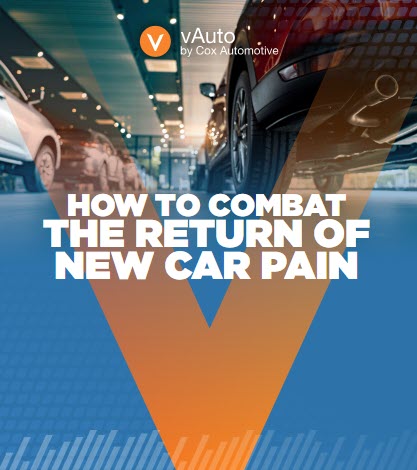Changing Times: A Call For A Money-Making Operational Mindset
If anyone needs evidence that car dealers can no longer simply sell cars to make money, I’d offer the following nuggets from the recently released, NADA Data 2018: Annual Financial Profile of America’s New-Car Franchised Dealerships.
Nugget 1: In 2018, NADA reports the total operating profit for dealers, on average, dropped to -$13,338 in 2018—a figure that’s $105,112 less than the tally dealers achieved in 2017.
Nugget 2: Total expenses as a percentage of gross profit ran 100.2 percent in 2018, up from 98.7 percent in 2017.
Nugget 3: While dealers retailed slightly fewer new vehicles in 2018 (902/store on average, compared to 922/store in 2017), the average retail transaction price climbed $938 in the same period. Yet, dealers didn’t really take home any profit from the transactions. NADA reports the average retail net profit per new vehicle retailed sunk to -$570 in 2018; it was -$421 in 2017.
Nugget 4: While dealers retailed more used vehicles in 2018 (720/store compared to 706/store in 2017), there wasn’t much left over on the bottom line. The NADA stats show the average retail net profit per used vehicle retailed grew to $6 in 2018, a return to black from the -$2 in average retail net profit per used vehicle retailed in 2017.
To be sure, dealers still made money in 2018. NADA’s report shows that dealers’ average net profit ran $1,358,240 last year, off about $38,000 from the total in 2017 (and down more than $108,500 from the net profit dealers achieved in 2016).
Much of the profit, as dealers know all too well, owes to the factory checks dealers receive for meeting performance and sales objectives. It’s no surprise that some dealers are pushing back against what’s become an over-reliance on factory financial support for survival.
It’s also no surprise that dealers are keenly focused on expense reduction. They understand you can’t spend more than you make and expect to stay in business.
But I believe there’s a bigger opportunity for dealers to improve the financial performance of their dealerships.
The opportunity starts with a firm and unfettered understanding that selling cars is no longer enough to make money in today’s car business. Instead, you must believe that your primary purpose as an auto retailer in the current market is to make more money from your investments in new and used vehicles.
This shift to a money-making mentality may seem semantic or simple, but it’s much more impactful and significant than you might think.
Consider, for example, the investment fundamentals in today’s used vehicle market.
Two or three years ago, dealers could reasonably expect that they’d acquire auction and trade-in vehicles with an average Cost to Market percentage around 80 percent. Dealers would also know that, by day 60 or so, the Cost to Market percentage would reach 90 percent—a warning sign, for those paying attention, that their investment was running out of return potential.
Today, the Cost to Market average for “fresh” cars runs about 88 percent, a figure that typically climbs to 90 percent after 30 days in inventory.
Unfortunately, I don’t believe most dealers have reckoned with this fundamental change in the shelf life of used vehicle investments in today’s more-efficient market.
I see the evidence in dealers’ pricing strategies. In many cases, they haven’t changed at all in the past several years. They still appear to presume that you can sell a car after 60 days and make money. The trouble is, the money’s mostly, if not all, gone after 30 days with many vehicles.
Dealers who account for what I call this “new math in used vehicles” tend to see far better profits, and sales volumes, than those who haven’t yet woken up to the new money-making reality.
Let’s also consider how dealers manage and regard their new vehicle inventory investments.
When I talk new cars with dealers, I’m struck by what can only be described as a sense of resignation—the factories have taken the fun, and the money, out of the business, and there’s little that can be done to change the current outcomes.
Now, I would ask dealers to consider if they heard a similar explanation from their financial advisor: “Well, geez, yeah…I know. Your portfolio’s not really doing that well, but there’s nothing we can do.”
Here again, I believe there’s opportunity for improvement that starts with a money-making mentality.
For example, if you know your investment starts costing you real money after it’s been idle for 90 days, doesn’t it make sense to reduce this risk—perhaps by retailing these units before the fresh ones off the truck?
Similarly, if the percentage of your vehicles older than 90 days runs more than 20 percent, doesn’t it make sense to examine, and perhaps try to change, how and why those cars became your investments in the first place?
These are the types of questions making money-minded dealers proactively ask themselves, and their teams, every day.
I also believe there’s opportunity in fixed operations when dealers apply a money-making lens to their current efforts.
The NADA data shows the average dealership wrote fewer Repair Orders (ROs) in total in 2018 than in 2016. This downward trajectory unquestionably reflects the fact that today’s vehicles require fewer maintenance intervals. Still, given that retail sales of new and used vehicles effectively increased during the same period, I would expect the trendlines to be heading up, not down.
When I talk to dealers about the need to shift to a money-making mindset, I suggest the following first step:
At your next managers meeting, don’t start by asking individual managers how they plan to sell more. First, ask them how they plan to help you make more money.
The post Changing Times: A Call For A Money-Making Operational Mindset appeared first on Dale Pollak.








